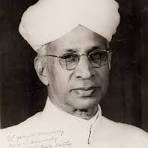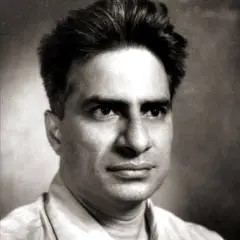by Sachi Sri Kantha, November 10, 2024
Prelude
Early this month, I read the opinion of my long time intellectual adversary Prof. Ratnajeevan Hoole on whom Eelam Tamils should vote for the forthcoming parliamentary elections of Nov 14th, in the Colombo Telegraph (Nov. 1st)
Of course, he is entitled for his view. But, what irked me was his garbled view on one of the oft-cited lines in Bhagavad Gita, considered as a holy text for Hindus. As typical of him, he exposed his ignorance on Hinduism. This is what Prof Hoole had written,
“Caste prejudice is integrated in the Tamil mind because it is Krishna (not I) who said in Bagavad Gita (4.13): ‘The four categories of occupations were created by me according to people’s qualities and activities.’ That is, a person of high caste is of high quality and of low caste is of low quality.”
My Rebuttal
Now, as a born Hindu, it’s my turn to refute Prof. Hoole’s garbled view on this particular Gita verse. His interpretation of the Sanskrit lines are totally wrong. Prof. Hoole is not literate in Sanskrit. I’m also not literate in Sanskrit. I quote three authorities. I hope, this short note is beneficial not only to Prof. Hoole (to improve his grasp on Bhagavad Gita), but also for fellow Eelam Tamils as well.

Sarvepalli Radhakrishnan
First, I checked a scholar who knew his beans. Sarvepalli Radhakrishnan (1888-1975), an internationally respected philosopher, had explained the meaning of this verse, as follows, in his 1948 book. I provide details related to this particular sloga. First, the original Sanskrit sloga. What Radhakrishnan had abbreviated as M.B., stands for Maha Bharata epic.
“catur varnyam maya srstam
Guna karma vibhagasah
Tasya kartaram api mam
Viddy akartaram avyayam”
The four fold order was created by Me according to the division of quality and work. Though I am its creator, know Me to be incapable of action or change.
Caturvarnyam: the four fold order. The emphasis is on guna (aptitude) and karma (function) and not jati (birth). The varna or the order to which we belong is independent of sex, birth or breeding.
A class determined by temperament and vocation is not a caste determined by birth and heredity. According to the M.B., the whole world was originally of one class but later it became divided into four divisions on account of the specific duties.
[footnote 1: ekavarnam idam purvam visvam asid yudhisthra
Karmakriyavisesena caturvarnyam pratisthitam]
Even the distinction between caste and outcaste is artificial and unspiritual. An anciet verse points out that the Brahmin and the outcaste are blood brothers.
[footnote 2: antyajo viprajatis ca eka eva sahodarch
Ekayoni prasatas ca ekesakhena jayate]
In the M.B., Yudhisthira says that it is difficult to find out the caste of persons on account of the mixture of castes. Men begat offspring in all sorts of women. So conduct is the only determining feature of caste according to sages.
[footnote 3: samkarat sarva varnanam duspariksyeti me matih
Sarve sarvasvapatyani janayanti sada narah
Tasmat silam prahhanestam vidur ye tattvadarsinah]
Akartaram: non-doer. As the Supreme is unattached, He is said to be a non-doer. Works do not affect His changeless being, though He is the unseen background of all works.”

Ananda Coomaraswamy
Secondly, let us check what Ananda Coomaraswamy (1877-1947) had written. He had published a three paragraph note in 1937, under the caption ‘The ‘Four Causes’ in the Bhagavad Gita’. This illustrious son of a Tamil Hindu father and a British Christian mother, had linked Bhagavad Gita’s ‘four causes’ of birth to ‘four Aristotelian causes’. Now, Prof. Hoole cannot tell us that Aristotle is a Tamil Hindu! I reproduce below Ananda Coomaraswamy’s thoughts verbatim. Words in italics, are as in the original.
“In Brhaharaynayka Upanisad, IV. 4.2, the event or act of coming to birth is referred to two immediate causes, knowledge and action (vidyakarmani, in which compound karman represents the causative power of past acts, and vidya a first cause or Providence, purva-prajna). It is interesting to compare with this Bhagavad Gita XVIII. 14-15, where events in general are explained by means of four immediate and one first cause. The passage runs ‘The causes (hetavah) of whatever it may be that a man undertakes (prarabhate, cf. samanvarabhete in the BU. Context), whether physically, verbally, or mentally, and whether ordinate or inordinate, are the ‘standing-ground’ (adhisthanam), the ‘maker’ or ‘doer’ (karta), the various ‘motive’ (karanam – reason, occasion, wherefore), and multifarious ‘motions’ (cestah), and therewith as fifth the Divine ‘ (daivyam, which Barnett admirably renders by ‘`Providence’).

D.D. Kosambi
It will be seen that the four immediate causes thus predicated coincide with the four Aristotelian causes, adhisthanam corresponding to the material, karta to the formal, karanam to the final, and cestah to the efficient cause, added to which is the daivyam or Providential cause, corresponding to the purvaprajna of the BU. Context. It should be noted that kr being as much to ‘make’ as to ‘do’, the explanation applies with equal validity to factibilia and agibilia: the karta, whether as maker (artist) or doer, being either way the formal cause, because it is in him that there subsists the idea of the thing to be made or done, in an imitable form, whether as ‘art in the artist’ or as ‘prudence in the doer’, respectively the recta ratio factibilium and recta ratio agibilium.”
Thirdly, to the comments of reputed Indian mathematician cum historian Damodar Dharmananda Kosambi (1907-1966). In his 1961 paper on Bhagavad Gita, Kosambi had written in a foot note, “A great deal of the confusion over the Gita derives from ignorance of reality, of the actual practices of large social groups; and from taking Brahmin documents as representative of all Indian society.”
Conclusion
My suggestion to Prof. Hoole is, rather than cherry-picking one particular sloga for convenience, it will be of benefit if one bothers to study the overall context of the entire text. Bhagavad Gita consists of only 700 slogas (verses) in Sanskrit original.
I could have used the Reader’s Comment section of the Colombo Telegraph. But, it’s comments policy restricts the word use to only 200. I did use it to comment on Prof. Hoole’s on another view, under my old pen name Cotton Port Goliard, which I resurrected this year, after a gap of 33 years. For details on my selection of this pen name, those interested can check the link in Tamil Nation site, still available for view. [ https://tamilnation.org/forum/sachisrikantha/]
References
Ananda K. Coomaraswamy: The ‘Four Causes’ in the Bhagavad Gita. Journal of the American Oriental Society, Dec 1937; 57(4): 415-416.
D.D. Kosambi: Social and economic aspects of the Bhagavad Gita. Journal of Economic and Social History of the Orient, Aug 1961; 4(2): 198-224.
Radhakrishnan: Bhagavad Gita – with an Introductory Essay, Sanskrit text, English translation and Notes, George Allan & Unwin Ltd, London, 7th impression 1963 (originally published 1948), pp. 160-161.